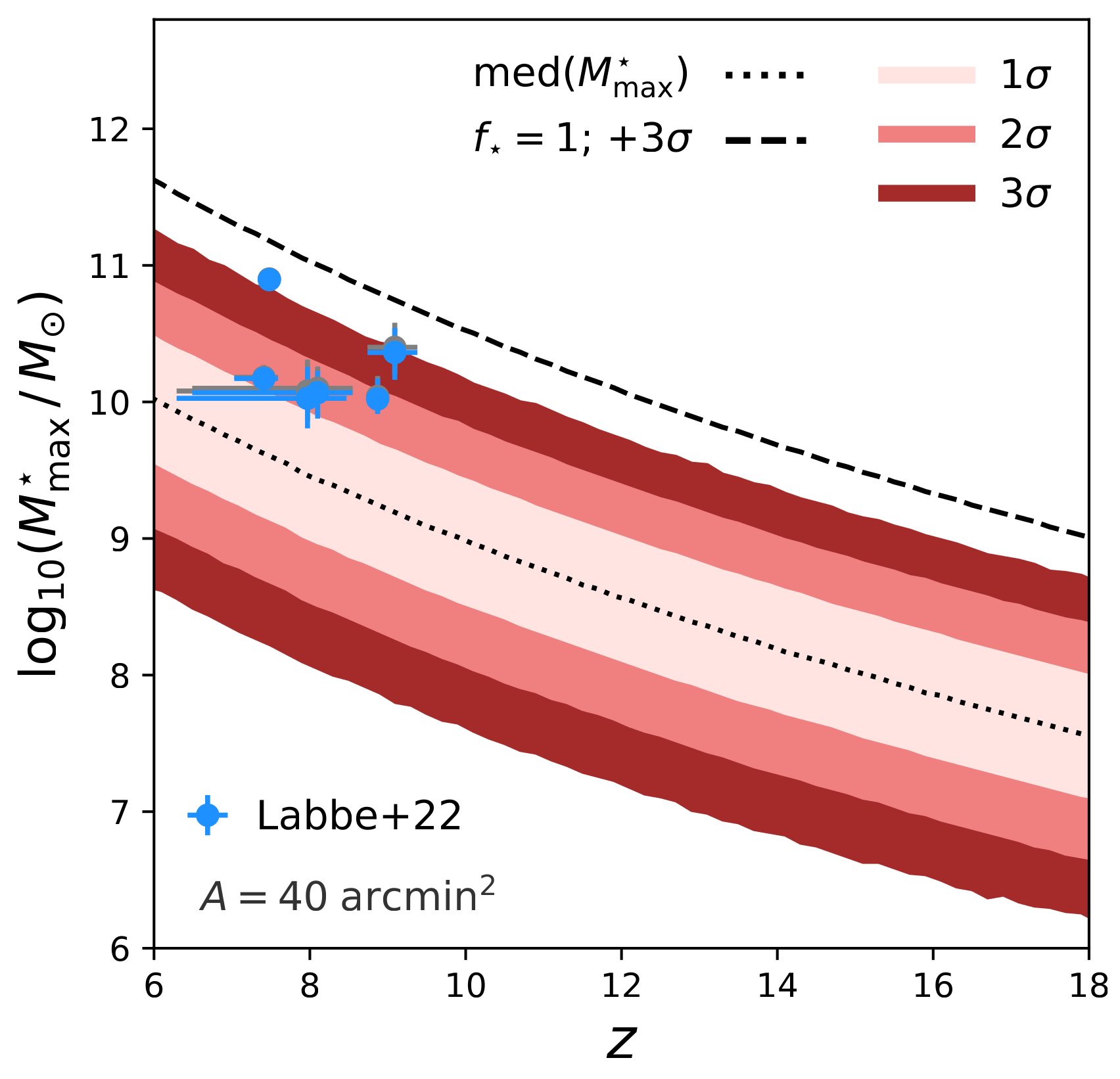Extreme Value Statistics is a branch of statistics concerned with the most extreme deviations from a given distribution. In (Lovell et al., 2023) we used EVS to predict the most massive haloes and galaxies in the high redshift Universe. We found tension with some of the earliest JWST results, but over time those tensions have diminished as the calibration has improved, redshift outliers have been identified, and stellar mass estimates have been refined.
EVS constraints on the most massive galaxy compared to the latest version of the Labbe+22 results.
The EVS technique is now being used to evaluate candidates from Euclid and other observatories (missing reference). Christian Kragh Jespersen, a student at Princeton, has also worked on including the effects of cosmic variance in an EVS-like scheme, finding important deviations from the fiducial results for individual JWST pointings (missing reference).
References
2023
-
Extreme value statistics of the halo and stellar mass distributions at high redshift: are JWST results in tension with {}Lambda{CDM?
Christopher C. Lovell, Ian Harrison, Yuichi Harikane, and 2 more authors
MNRAS, Jan 2023
ADS Bibcode: 2023MNRAS.518.2511L
The distribution of dark matter halo masses can be accurately predicted in the lambda cold dark matter (ΛCDM) cosmology. The presence of a single massive halo or galaxy at a particular redshift, assuming some baryon and stellar fraction for the latter, can therefore be used to test the underlying cosmological model. A number of recent measurements of very large galaxy stellar masses at high redshift (z \textgreater 8) motivate an investigation into whether any of these objects are in tension with ΛCDM. We use extreme value statistics to generate confidence regions in the mass-redshift plane for the most extreme mass haloes and galaxies. Tests against numerical models show no tension, neither in their dark matter halo masses nor their galaxy stellar masses. However, we find tentative \textgreater3σ tension with recent observational determinations of galaxy masses at high redshift from both Hubble Space Telescope and James Webb Space Telescope, despite using conservative estimates for the stellar fraction (f⋆ ~ 1). Either these galaxies are in tension with ΛCDM, or there are unaccounted for uncertainties in their stellar mass or redshift estimates.
